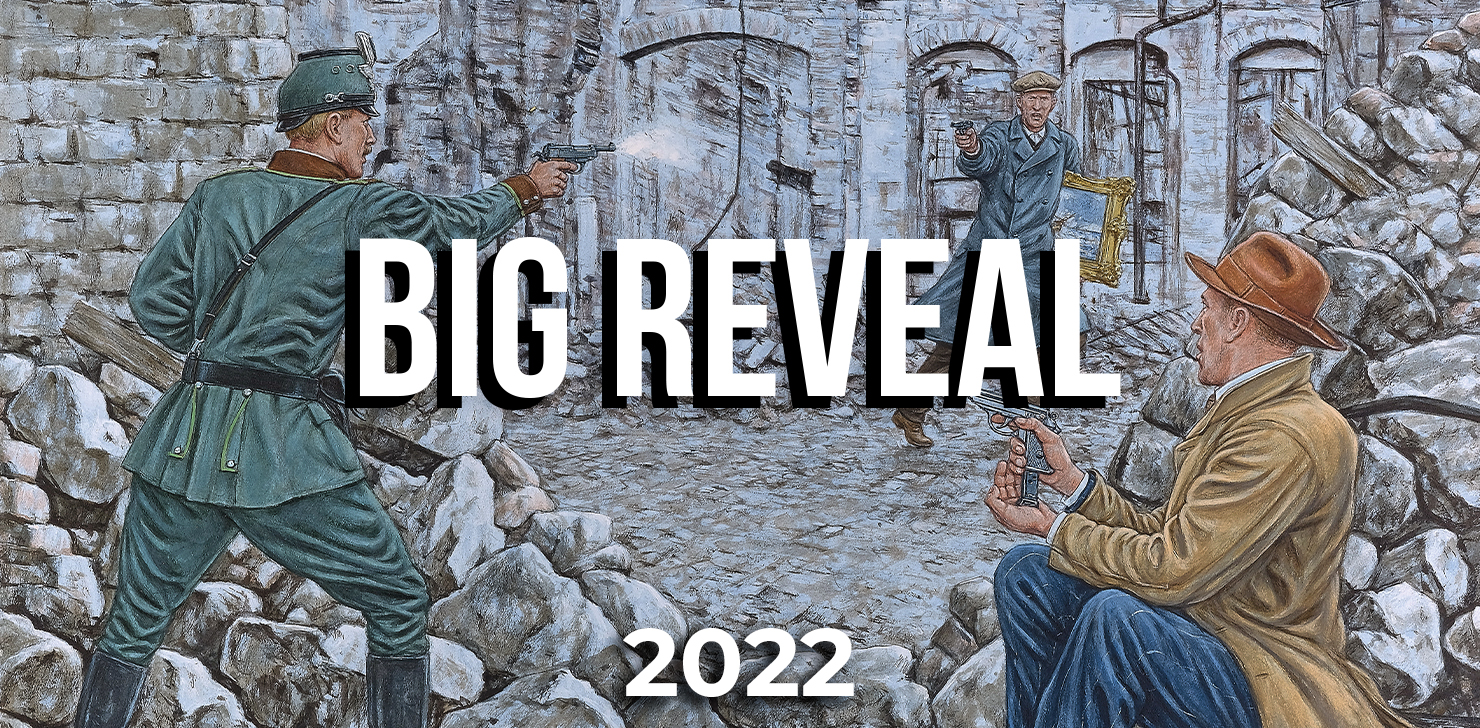
This summer we're unveiling all the titles we're publishing in 2023! Today we're moving on to the Weapon series. Commissioning Editor Nick Reynolds takes us through what we can expect.
Prolific author Dr Chris McNab and experienced illustrators Ramiro Bujeiro and Alan Gilliland are working together on a particularly interesting volume in the Weapon series, investigating the SVD Dragunov, the designated marksman rifle that confirmed the continuing importance of traditional larger-calibre rifle ammunition alongside the lighter assault-rifle rounds adopted by the US and Soviet forces during the Cold War. Chris reveals how this innovative semi-automatic, intended to reach out to ranges beyond those practical for the assault rifles carried by the majority of Soviet riflemen, built on the successes of the World War II-era SVT-40. Since the 1960s it has seen action across the globe, both with insurgents fighting in Iraq, Syria and elsewhere and also with regular forces deployed in Vietnam, Afghanistan, Chechnya and Ukraine.
Let us know what you're most looking forward to in the comments.
WPM 85 Infantry Antiaircraft Missiles: Man-Portable Air Defense Systems
By Steven J. Zaloga
Noted authority Steven J. Zaloga charts the development, combat use, and influence of man-portable air defense systems, from the late 1960s to the present day.
The first attempts at developing a man-portable air defense system (MANPADS) based around a guided missile began in the mid-1950s, as a response to the increased speed and maneuverability of jet aircraft. This book charts the technological evolution of the MANPADS and explores their combat usage and the lessons from these encounters. Besides detailing the missiles, it also surveys the various methods developed as countermeasures to the MANPADS threat.
The first generation of MANPADS, such as the US Army’s Redeye and the Soviet Strela-2 (SA-7 Grail), saw combat use in the Vietnam War in 1972 and the Yom Kippur War of 1973. The next generation of infrared-guided MANPADS, such as the US Stinger and Soviet Igla, came to prominence following the Soviet invasion of Afghanistan in 1979. Since the 1970s, MANPADS have been used in innumerable wars, border conflicts, civil wars and insurrections. Featuring specially commissioned artwork and carefully chosen photographs, this study tells the story of these lethally effective weapons, from their origins to their use today.
WPN 86 Nambu Pistols: Japanese military handguns 1900–45
By John Walter
This is the absorbing story of the handguns credited to Nambu Kijiro, the principal personal-defence weapons of the Imperial forces.
Featuring full-color artwork and carefully chosen photographs, this book charts the origins, development, combat use, and legacy of the Nambu pistols. Cutaway artwork reveals the inner workings of these important handguns, while specially commissioned battlescenes depict them in use in action.
Influenced by the German C 96 and other semi-automatic pistols, the first Nambu model was never accepted for universal issue, being confined largely to purchase by Japanese officers. Adopted in 1925, the 14th Year Type was to become the best-known of these handguns, serving in every campaign undertaken by the Japanese in the 1930s and then throughout World War II. It served alongside the bizarrely conceived Type 94, intended as the weapon of airmen, tank crew, and anyone to whom its compact dimensions were useful.
When World War II ended, thousands of Nambu pistols arrived in America with US veterans of World War II, while others were carried by insurgents and other armed groups across South East Asia for decades after 1945. Fully illustrated, this is the engrossing story of these distinctive pistols, from their origins to their legacy.
WPN 87 The SVD Dragunov Rifle
By Chris McNab
Featuring specially commissioned artwork and carefully chosen photographs, this study charts the SVD Dragunov rifle’s development, combat use and lasting legacy, from Vietnam to Syria.
Developed as a long-range support rifle in the Soviet Union during the 1960s, the Dragunov stood out against most Western sniping rifle types by being semi-automatic, a configuration that marginally lowers accuracy compared to bolt-action sniping rifles, but which allows for faster follow-up shots. Even so, the SVD is still capable of taking precision killing shots out to 800m and beyond, making it a thoroughly practical combat weapon for marksmen and snipers.
In this fully illustrated study, Chris McNab explores the Dragunov’s development and performance in detail. But the story of this weapon really comes to life with its combat history. It is the world’s most widespread sniping rifle, still in use in the former Soviet armies and sold to more than 40 countries worldwide. Its rugged design, dependable capabilities and relatively low cost means that it has been used in every conceivable type of conflict, from Vietnam and Afghanistan to Iraq and Syria. Illustrated with cutaway artwork and battlescenes, plus technical and historical photographs, this study tells the story of this remarkable weapon, from design and development to tactical use in action.


Comments
You must be logged in to comment on this post. Click here to log in.
Submit your comment